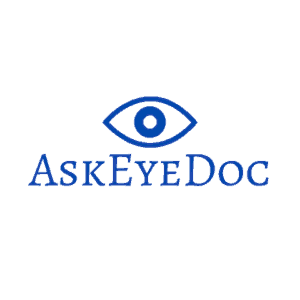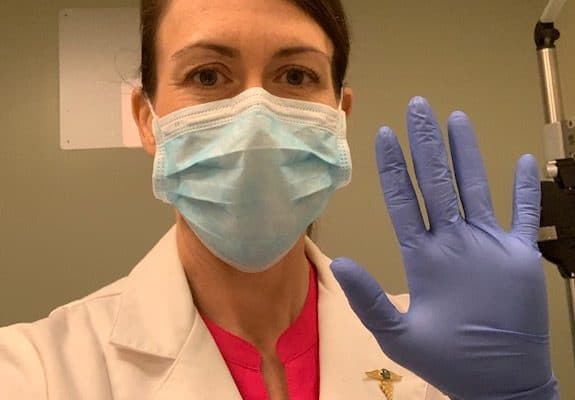Currently, we are faced with an incredibly challenging time. This pandemic has changed all of our lives in ways beyond any of our imaginations. . .
I think by now everyone is tired of hearing about COVID-19. When can this nightmare be over? Unfortunately, it seems as though we are living in a new normal. For myself as a healthcare worker masks are a routine part of my daily attire. Vaccinated and unvaccinated is now a political statement. But I am not here to talk about politics. I simply want to educate you on the ocular symptoms of COVID-19.
We all know the symptoms of COVID-19; turn on the TV or social media and you’ll be bombarded with information. So let me get right to the Ocular Symptoms.
Ocular Symptoms of COVID:
- red eyes
- inflammation
- watery eyes
- light sensitivity
- irritated eyes
Most cases of COVID-19 have not presented with ocular symptoms. However, the COVID-19 virus can be spread by touching your eyes. The good news is that only about 1% to 3% of coronavirus patients get conjunctivitis, according to the American Academy of Ophthalmology (AAO).
Conjunctivitis is a medical term that means swelling of the conjunctiva, the clear tissue that covers the white of the eye (sclera) and the inside of the eyelids. The symptoms can include redness, inflammation, watery discharge, light sensitivity, or irritation. Since the eye is a mucous membrane like our mouth and nose, there is a potential for spread through the eye. The AAO has confirmed that people who have the coronavirus can also spread the illness through their tears.
Drugs to treat COVID-19 can come with ocular side effects
Antimalarial drugs, Hydroxychloroquine, and chloroquine have been used for decades to treat lupus, rheumatoid arthritis, and other auto-immune diseases. These same medications are now being used short-term to treat COVID-19. Rarely (about 1-2% of patients during a 5-year course) present with ocular signs and symptoms due to medication toxicity.
The symptoms of ocular toxicity to Hydroxychloroquine or Chloroquine are:
- Trouble focusing on objects straight ahead, due to loss of central vision
- Difficulty reading
- Weak, blurry or distorted vision
- Changes in color vision
- Symptoms usually present 2-14 days after exposure to the virus
- Fear and anxiety is high and can cause us to present with similar symptoms
- According to the CDC (Centers for Disease Control and Prevention) the immediate risk of becoming seriously ill from the virus that causes COVID-19 is thought to be low for most people.
- There are 3 main symptoms: Fever, Cough and Shortness of Breath
Treatment of Viral Conjunctivitis
The main treatment would be to lubricate your eyes frequently. The use of artificial tears every hour can not only help to lubricate the eyes but also keep them clean. Click here for my recommended artificial tears.
What should we do if you are sick?
Follow the guidelines of the CDC: https://www.cdc.gov/coronavirus/2019-ncov/if-you-are-sick/steps-when-sick.html
Do not go to the ER if it is not necessary. It will just put you at higher risk for contracting the COVID-19 virus or other illnesses.
Stay Home if you are Feeling ill:
If you feel sick, staying home is recommended at this time. There are several Doctors that are available to consult with via telephone. Call your Primary care physician and they should have a Doctor available for a phone consultation.
According to a press release from the KCDC, South Korea had an early surge of cases with a death rate of 10.4% in COVID-19 patients 80 years old or older. This rate went down in younger patients with a death rate of 5.35% in patients aged 70 to 79, 1.51% in patients 60 to 69, 0.37% in patients 50-59. Even lower rates were seen in younger people, dropping to zero in those 29 and younger.
This does not mean that younger patients are immune from developing COVID-19 symptoms, but usually, the symptoms are milder in younger patients.
Steps to take to reduce the spread of COVID-19:
- Wash your hands for at least 20 seconds. (My daughter likes to sing Happy Birthday to her hands, which is about 20 seconds)
- Avoid touching your face, nose, eyes and mouth (mucous membranes are the best source for infection)
- If soap and water are not available, hand sanitizer should be used.
- Cough into your elbow, not your hands
- Throw away used tissue into a lined, covered trash can if possible
- Do not share food or beverages with others
- Clean all surfaces with soap and water, including light switches, counters, toilet handles and seats, sink faucet handles, doorknobs, remote controls, phones and anything that you touch. Always clean surfaces with soap and water. Soap will effectively inactivate viruses, including COVID-19 according to Professor Pall Thordarson from School of Chemistry UNSW.
- Monitor your symptoms
- Stay well hydrated: Drink more fluids than normal to keep yourself hydrated.
According to the CDC, the following symptoms warrant an emergency:
- Difficulty breathing or shortness of breath
- Persistent pain or pressure in the chest
- New confusion or inability to arouse
- Bluish lips or face
The Bottom Line:
Wash your hands frequently and stay positive (I know that sounds funny, but anxiety and stress can cause symptoms of shortness of breath).
If you have ocular symptoms see your eye doctor and use plenty of Artificial tears (click here for approved eye drops).
When in doubt call your doctor, do not go straight to your Doctor or Emergency room. Many physicians are available for phone-in consultations.


